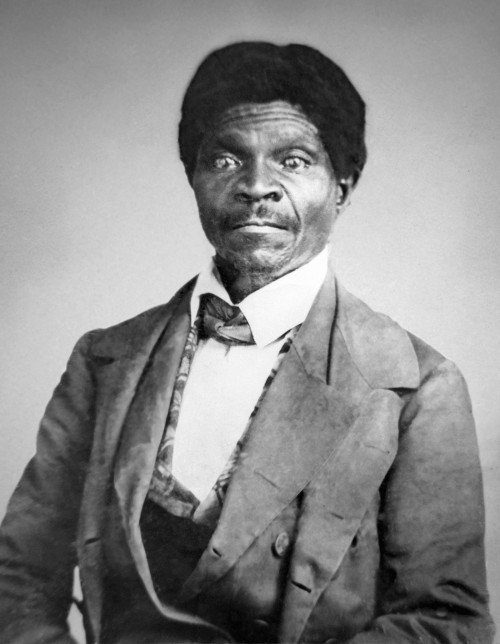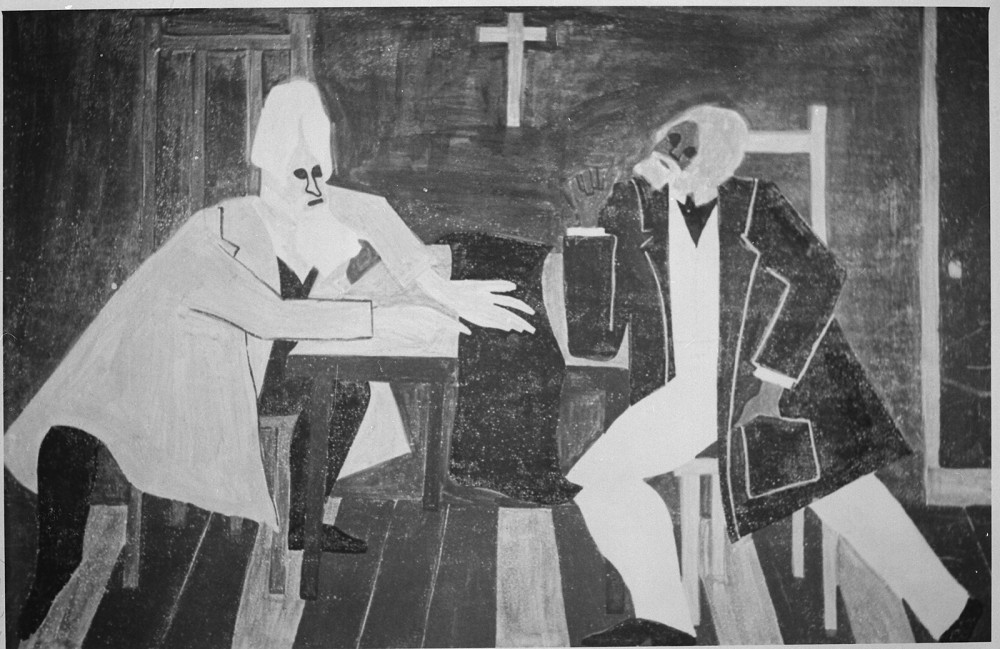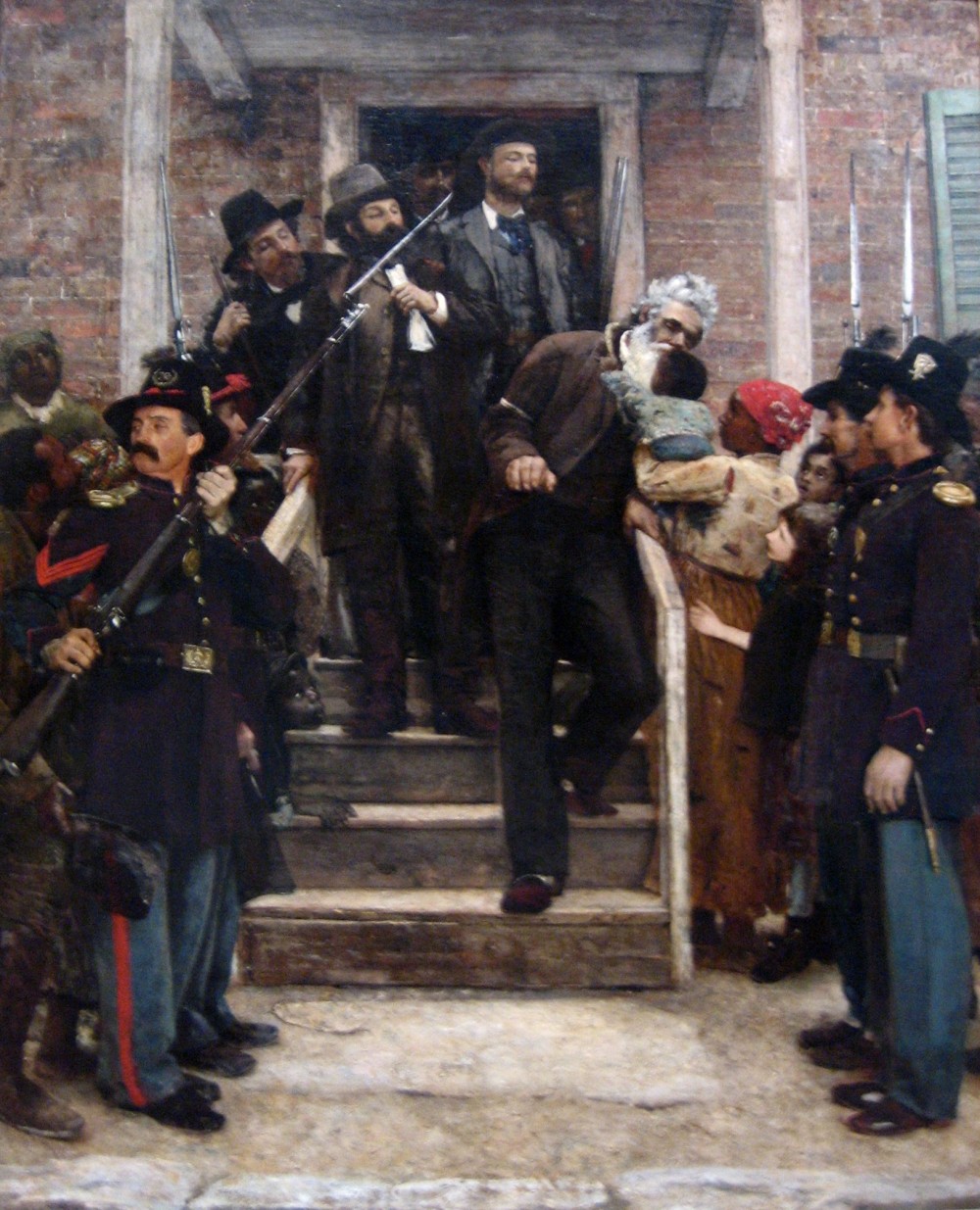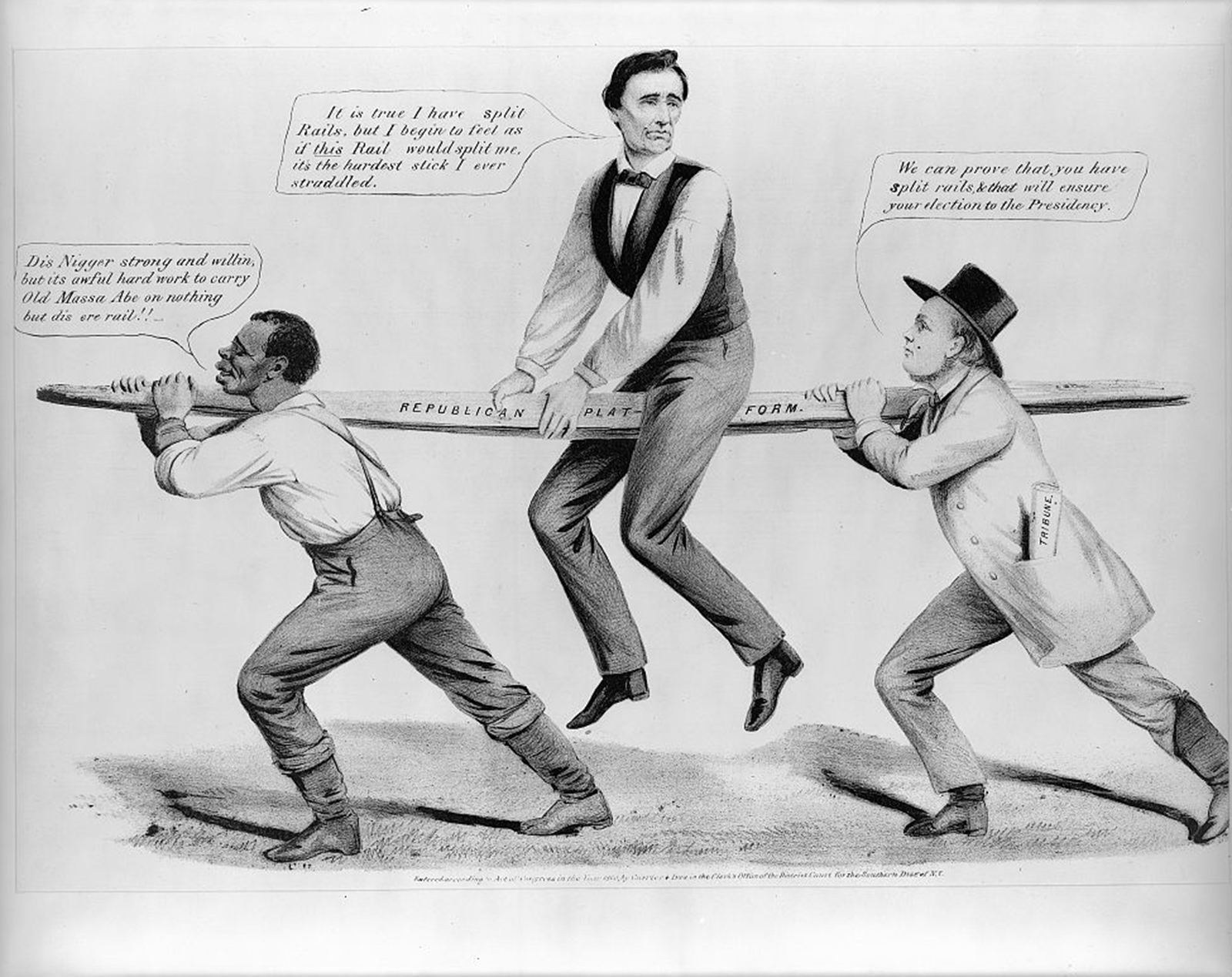44 From Sectional Crisis to National Crisis
White anti-slavery leaders in the North were left to wonder what happened in November 1856, but few took the news too hard. They hailed Frémont’s defeat as a “glorious” one and looked ahead to the party’s future successes. For those still in slavery, or hoping to see loved ones freed, the news was of course much harder to take. The Republican Party had promised the rise of an anti-slavery coalition, but voters rebuked it. The lessons seemed clear enough.
Kansas loomed large over the 1856 election, darkening the national mood. The story of voter fraud in Kansas had begun years before in 1854, when nearby Missourians first started crossing the border to tamper with the Kansas elections. Noting this, critics at the time attacked the Pierce administration for not living up to the ideals of popular sovereignty by ensuring fair elections. From there, the crisis only deepened. Kansas voted to come into the Union as a free state, but the federal government refused to recognize their votes and instead recognized a sham pro-slavery legislature.
The sectional crisis had at last become a national crisis. “Bleeding Kansas” was the first place to demonstrate that the sectional crisis could easily, and in fact already was, exploding into a full-blown national crisis. As the national mood grew increasingly grim, Kansas attracted militants representing the extreme sides of the slavery debate.
In the days after the 1856 Presidential election, Buchanan made his plans for his time in office clear. He talked with Chief Justice Roger Taney on inauguration day about a court decision he hoped to see handled during his time in office. Indeed, not long after the inauguration, the Supreme Court handed down a decision that would come to define Buchanan’s Presidency. The Dred Scott decision, Scott v. Sandford, ruled that black Americans could not be citizens of the United States. This gave the Buchanan administration and its southern allies a direct repudiation of the Missouri Compromise. The court ruled that Scott, a Missouri slave, had no right to sue in United States courts. The Dred Scott decision signaled that the federal government was now fully committed to extending slavery as far and as wide as it might want.

The Dred Scott decision seemed to settle the sectional crisis by making slavery fully national, but in reality it just exacerbated sectional tensions further. In 1857, Buchanan sent U.S. military forces to Utah, hoping to subdue Utah’s Mormon communities. This action, however, led to renewed charges, many of them leveled from within his own party, that the administration was abusing its powers. Far more important than the Utah invasion, however, was the ongoing events in Kansas. It was Kansas that at last proved to many northerners that the sectional crisis would not go away unless slavery also went away.
The Illinois Senate race in 1858 put the scope of the sectional crisis on full display. Republican candidate Abraham Lincoln challenged the greatly influential Democrat Stephen Douglas. Pandering to appeals to white supremacy, Douglas hammered the Republican opposition as a “Black Republican” party bent on racial equality. The Republicans, including Lincoln, were thrown on the defensive. Democrats hung on as best they could, but the Republicans won the House of Representatives and picked up seats in the Senate. Lincoln actually lost his contest with Stephen Douglas, but in the process firmly established himself as a leading national Republican. After the 1858 elections, all eyes turned to 1860. Given the Republican Party’s successes since 1854, it was expected that the 1860 Presidential election might produce the nation’s first anti-slavery president.
In the troubled decades since the Missouri Compromise, the nation slowly tore itself apart. Congressman clubbed each other nearly to death on the floor of the Congress, and by the middle 1850s Americans were already at war on the Kansas and Missouri plains. Across the country, cities and towns were in various stages of revolt against federal authority. Fighting spread even further against Indians in the Far West and against Mormons in Utah. The nation’s militants anticipated a coming breakdown, and worked to exploit it. John Brown, fresh from his actions in Kansas, moved east and planned more violence. Assembling a team from across the West, including black radicals from Oberlin, Ohio, and throughout communities in Canada West, Brown hatched a plan to attack Harper’s Ferry, a federal weapon’s arsenal in Virginia (now West Virginia). He would use the weapons to lead a slave revolt. Brown approached Frederick Douglass, though Douglass refused to join.

Brown’s raid embarked on October 16. By October 18, a command under Robert E. Lee had crushed the revolt. Many of Brown’s men, including his own sons, were killed, but Brown himself lived and was imprisoned. Brown prophesied while in prison that the nation’s crimes would only be purged with blood. He went to the gallows in December 1859. Northerners made a stunning display of sympathy on the day of his execution. Southerners took their reactions to mean that the coming 1860 election would be, in many ways, a referendum on secession and disunion.

Republicans wanted little to do with Brown and instead tried to portray themselves as moderates opposed to both abolitionists and proslavery expansionists. In this climate, the parties opened their contest for the 1860 Presidential election. The Democratic Party fared poorly as its southern delegates bolted its national convention at Charleston and ran their own candidate, Vice President John C. Breckenridge of Kentucky. Hoping to field a candidate who might nonetheless manage to bridge the broken party’s factions, the Democrats decided to meet again at Baltimore, and nominated Stephen A. Douglas of Illinois.
The Republicans, meanwhile, held their boisterous convention in Chicago. The Republican platform made the party’s anti-slavery commitments clear, also making wide promises to its white constituents, particularly westerners, with the promise of new land, transcontinental railroads, and broad support of public schools. Abraham Lincoln, a candidate few outside of Illinois truly expected to win, nonetheless proved far less polarizing than the other names on the ballot. Lincoln won the nomination, and with the Democrats in disarray, Republicans knew their candidate Lincoln had a good chance of winning.

Abraham Lincoln won the 1860 contest on November 6, gaining just 40% of the popular vote and not a single southern vote in the Electoral College. Within days, southern states were organizing secession conventions. John J. Crittenden of Kentucky proposed a series of compromises, but a clear pro-southern bias meant they had little chance of gaining Republican acceptance. Crittenden’s plan promised renewed enforcement of the Fugitive Slave Law, and offered a plan to keep slavery in the nation’s capital. Republicans by late 1860 knew that the voters who had just placed them in power did not want them to cave on these points, and southern states proceed with their plans to leave the Union. On December 20, South Carolina voted to secede, and issued its “Declaration of the Immediate Causes.” The Declaration highlighted failure of the federal government to enforce the Fugitive Slave Act over competing personal liberty laws in northern states. After the war many southerners claimed that secession was primarily motivated by a concern to preserve states’ rights, but the very first ordinance of secession’s primary complaint, and many that came after, listed the federal government’s failure to exert its authority over the northern states.
The year 1861, then, saw the culmination of the secession crisis. Before he left for Washington, Lincoln told those who had gathered in Springfield to wish him well and that he faced a “task greater than Washington’s” in the years to come. Southerners were also learning the challenges of forming a new nation. The seceded states grappled with internal divisions right way, as states with slaveholders sometimes did not support the newly seceded states. In January, for example, Delaware rejected secession. But states in the lower south adopted a different course. The State of Mississippi seceded. Later in the month, the states of Florida, Alabama, Georgia, and Louisiana also all left the Union. By early February, Texas had also joined the newly seceded states. In February, southerners drafted a constitution protecting slavery and named a westerner, Jefferson Davis of Mississippi, as their President. When Abraham Lincoln acted upon his constitutional mandate as Commander in Chief following his inauguration as President of the United States in Washington on March 4, rebels calling themselves members of the Confederate States of America opened fire. Within days, Abraham Lincoln would demand 75,000 volunteers from the North to crush the rebellion, and the American Civil War began.

